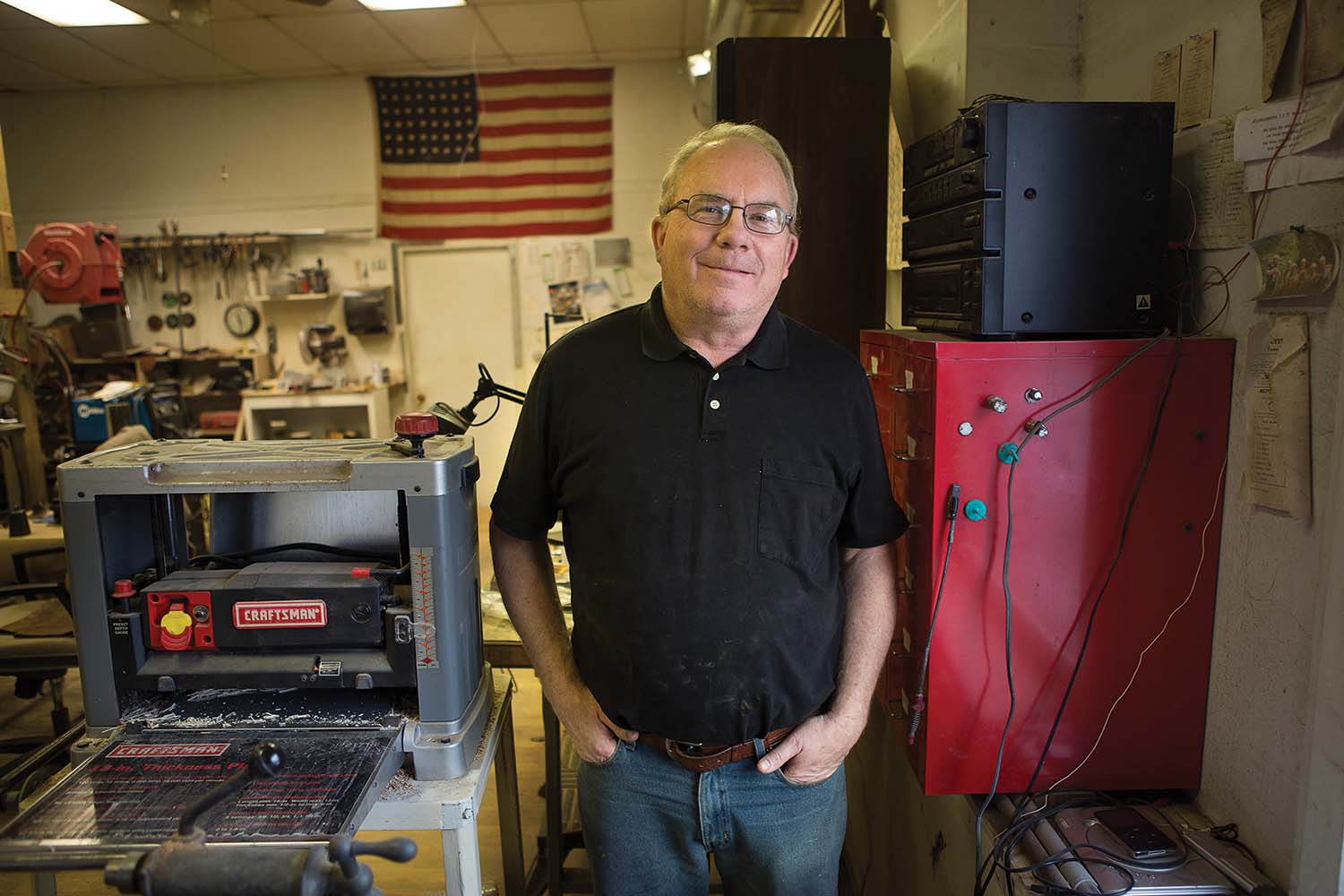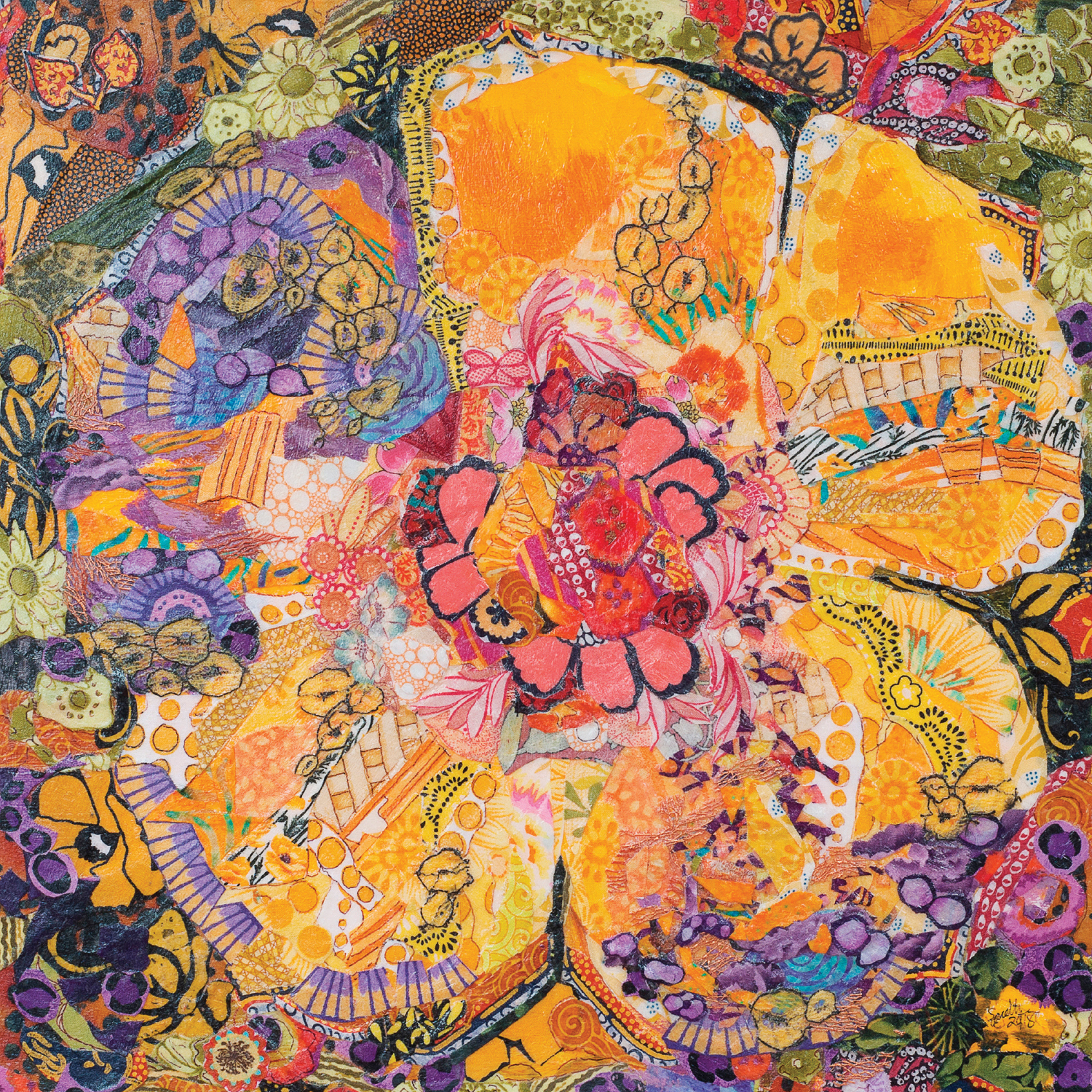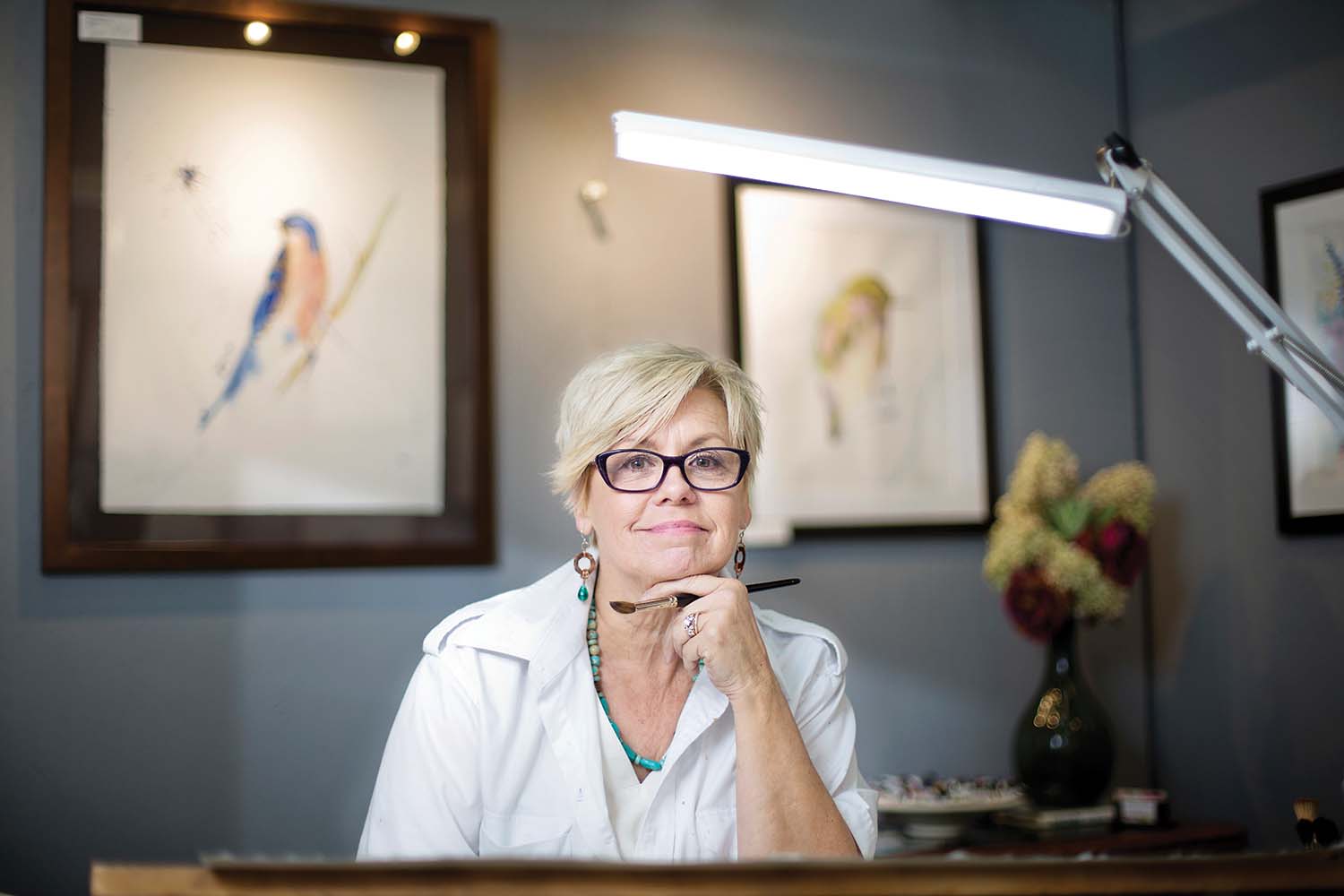
Fred McMullen transformed an old bank building into his studio, where he makes mythical figures carved from bronze. Photo by Matt Rose
Sometimes the creative impulse has to bide its time. Fred McMullen waited until the last of his four children had graduated from high school and he’d retired from his 9-to-5 life working in construction and logistics. But then, when he and his wife moved south from Ohio with the “sole purpose of setting up an art studio,” they went big. The couple converted a historic bank building in East Flat Rock that now houses Diane — a glass artist who studied flameworking at Penland School of Crafts — himself, and Bentree Studios. It’s here where his early love of metal as an art form reaches full expression.

The figures from the sculptor’s series Toil struggle expressively against the hardships of life. Photo by Matt Rose
The sculptor has very little formal art eduction and is the only one of 13 other siblings to turn to making art full time — but the attraction was there early on. “We would melt lead tire weights in the basement and cast fishing-line weights, as well as pour it into toy and candy molds,” he remembers. “Though I’ve painted and drawn early in my life, sculpture is my first love and the field I want to progress in.”
Citing Calder, Rodin, and the abstract, large-scale welded sculptures of David Smith as particular influences, McMullen, in his own work, tends toward the figurative, with elements drawn from nature and the human form. The pieces he calls “constructs,” though, invoke the machine art of the mid 20th century, using gears and other metallic elements wedded to wooden forms. His wooden shelves and tables, with their unfinished edges and sleek metal frames, recall the minimalist school of contemporary art.

Photo by Matt Rose
These pieces were among McMullen’s earliest work when he was still living in Ohio, where a cultural-arts center in Columbus provided classes and studio space and where McMullen developed a passion for the process of casting and finishing. The casting was at first done by the students’ instructor, after they had sculpted a piece in clay and made the molds. “When he developed health problems and was unable to cast the bronzes for us, I started making the constructs,” McMullen says. “By finding interesting machine parts and combining them with old-growth wood that I had access to because of my construction work, I was able to gratify my need to create.”
McMullen now has a fully equipped foundry in the former First Bank and Trust building in East Flat Rock, built in 1923, which a brother who lives in Greenville found for him. “It possessed everything I had thought about for years,” McMullen says. “Upstairs living space, a large work space, and space to be able to rent as a supplement for income.” His studio space once contained a drug store, the living quarters upstairs are a former doctor’s office, and the bank’s original vault and storage room were still filled with old deposit slips and balance statements — “but unfortunately,” McMullen notes, “no money was left behind.” It took two years to renovate the building and set up the foundry before he could get to work.

Photo by Matt Rose
For most of his pieces, McMullen makes the base figure in wax. He also makes the molds that encase each piece for casting using the “lost wax” process: the molds allow the wax to melt out through small holes during heating in the oven; the negative space that’s left is then filled with molten bronze. “This is the most challenging part of the process,” he says. The mold might crack, or the molten metal might flow incorrectly. Then everything is lost, and he has to start over.
McMullen’s largest piece so far weighs in at 25 pounds and was formed from separately cast pieces welded together. The 18-inch-tall figure, The Itinerant, is an old-fashioned hobo-like figure with a floppy hat and a sack slung over his shoulder, mounted on a polished wooden base. It took six months to create from start to finish. “This year I plan to cast some larger figures of the human form, 18 to 20 inches tall,” the artist reveals.

Sculptor Fred McMullen examines a work in progress. Photo by Matt Rose
Among the more arresting pieces that McMullen’s created is the series he titled Toil, begun when he cast a small male figure in a climbing posture welded to an old rusted bedspring. He named it Jacob’s Ladder. More followed, each figure shown pushing, pulling, or carrying some seemingly immovable object: a Sisyphean struggle captured in bronze.
“The idea of struggling against obstacles larger than ourselves comes up regularly in my work,” McMullen says. “Much of my experience to pursue my art has been overcoming the everyday struggles of paying the bills, raising children, and the time requirements to be good at what I make.”
Fred McMullen’s metal and wood sculptures can be seen online at bentreestudios.com and at Art Mob Studios (124 4th Avenue East, downtown Hendersonville). Studio visits are also encouraged: 126 West Blue Ridge Road in East Flat Rock. Call 614-270-3444 for hours.



